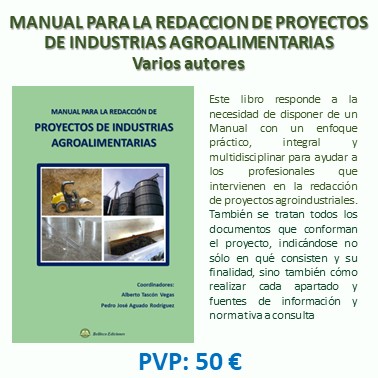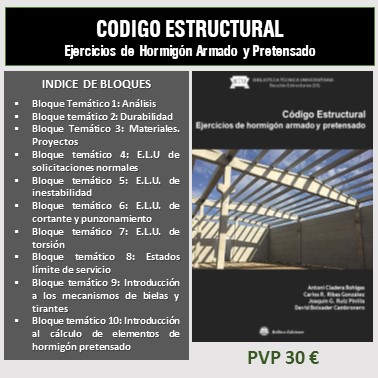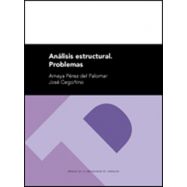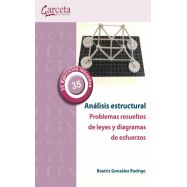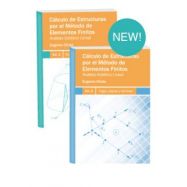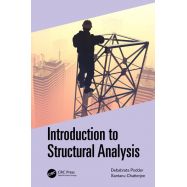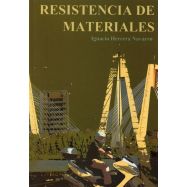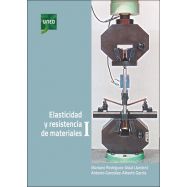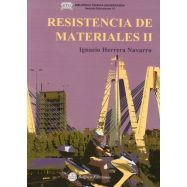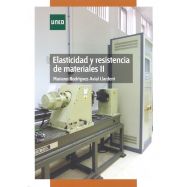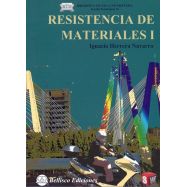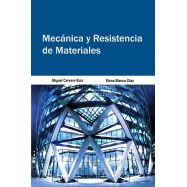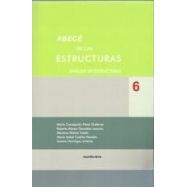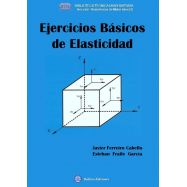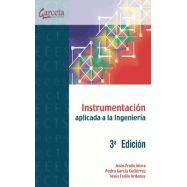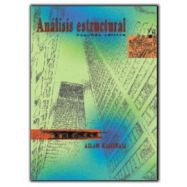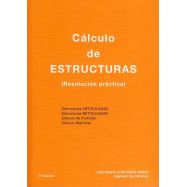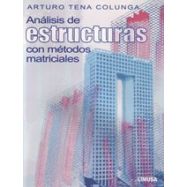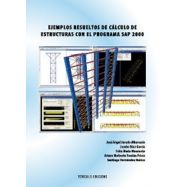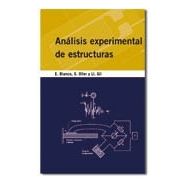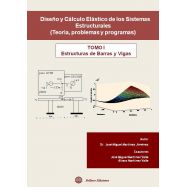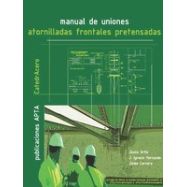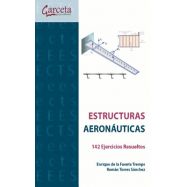Ningún producto
Materias
- BELLISCO EDICIONES. Nuestro Fondo Editorial
- FONDOS EDITORIALES EN DISTRIBUCION
- LIBROS TECNICOS EN INGLES
- ARQUITECTURA - URBANISMO
- AUTOMOCION - MOTORES - VEHICULOS
- AVIONICA - AERONAUTICA
- CALIDAD - EMPRESARIALES - GESTION
- CIENCIAS EXACTAS - MATEMATICAS
- CIENCIAS NATURALES Y APLICADAS
- CIENCIAS DE LA TIERRA - INGENIERIA DEL SUELO
- DICCIONARIOS TECNICOS
- ESTRUCTURAS - CONSTRUCCION
- Acústica (aislamiento, ruidos, vibraciones)
- Análisis de estructuras, resistencia de materiales, elasticidad, cálculo matricial
- Edificación
- Estructuras de Hormigón
- Estructuras Metálicas
- Estructuras de Madera
- Estructuras Mixtas
- Estructuras y Construcción en General
- Novedades Estructuras-Construccion
- rehabilitacion y restauracion
- Formación Profesional: Oficios en construccion, edificación y obras
-
- FORMACION PROFESIONAL
- HIDRAULICA - INGENIERIA SANITARIA - AGUAS
- INGENIERIA CIVIL - OBRAS PUBLICAS
- INGENIERIA MECANICA E INDUSTRIAL
- INSTALACIONES . GENERALES, EN EDIFICACION E INDUSTRIALES
- MATERIALES
- MEDIO AMBIENTE
- NORMATIVA
- OPOSICIONES
- PREVENCION DE RIESGOS LABORALES
- PROGRAMAS INFORMATICOS DE CALCULO
- TECNOLOGIA DE LOS ALIMENTOS: Industrias: Conservación, envasado y cadenas alimentarias
- TELECOMUNICACIONES - INFORMATICA - TECNOLOGIA DE LA INFORMACION
- OUTLET DE BELLISCO: Descuentos de hasta el 80%
- RELIGION, TEOLOGIA, MORAL Y ESPIRITUALIDAD
- VARIOS
- OFERTAS
- PROMOCIONES
- NEWSLETTER
- CATEGORIAS DESTACADAS
- ULTIMAS NOVEDADES BELLISCO
- ARQUITECTURA SOSTENBILE
- URBANISNO
- MATEMATICAS EN GENERAL
- AGRONOMOS-AGRICULTURA-FORESTALES
- ELECTROMAGENTISMO-ELECTRONICA-ELECTRICIDAD
- INGª Y MECÁNICA DEL SUELO. CIMENTACIONES
- TOPOGRAFIA, FOTOGRAMETRÍA, GEODESIA
- EDIFICACION
- ANALISIS DE ESTRUCTURAS, RESISTENCIA DE MATERIALES, ELASTICIDAD, CALCULO MATRICIAL
- OFICIOS VARIOS
- ABASTECIMIENTO Y DISTRIBUCION DE AGUA
- PUENTES
- TUNELES Y OBRAS SUBTERRANEAS
- MAQUINAS Y MECANISMOS
- SOLDADURA
- CLIMATIZACION
- INSTALACIONES DE AGUA
- INSTALACIONES ELECTRICAS CIENCIA E INGENIERIA DE MATERIALES
- ENERGIAS RENOVABLES
- DESARROLLO SOSTENIBLE
- INFORMATICA-SISTEMAS-FORMACION-PROGRAMAS
-
STATIC ANALYSIS OF DETERMINATE AND INDETERMINATE STRUCTURES
 Ver más grande
Ver más grande Referencia: Código 09682
Enero de 2022 - Kenneth Derucher - Refª 9682
Kenneth Derucher, Chandrasekhar Putcha, Uksun Kim, Hota V.S. GangaRao
Enero de 2022 Páginas: 202
Código 9682 ISBN/EAN: 9781032159829
Book Description
This book presents students with the key fundamental elements of structural analysis and covers as much material as is needed for a single-semester course, allowing for a full understanding of indeterminate structural analysis methods without being overwhelming. Authored by four full professors of engineering, this class-tested approach is more practical and focused than what’s found in other existing structural analysis titles, and therefore more easily digestible and accessible. It also allows students to solve indeterminate structural analysis problems by utilizing different methods, enabling them to compare the merits of each, and providing a greater understanding of the subject material.
Features:
- Includes practical examples to illustrate the concepts presented throughout the book.
- Examines and compares different methods to solve indeterminate structural analysis problems.
- Presents a focused treatment of the subject suitable as a primary text for coursework.
Static Analysis of Determinate and Indeterminate Structures is suitable for Civil Engineering students taking Structural Analysis courses.
Table of Contents
ANALYSIS OF STATICALLY DETERMINATE STRUCTURES. Solving Reactions Using Equations of Force. Deflection of Statically Determinate Beams and Frames. Deflection of Statically Determinate Trusses. Shear Force and Bending Moment Diagrams for Beams. Influence Lines for Statically Determinate Structures. ANALYSIS OF STATICALLY INDETERMINATE STRUCTURES. Analysis of Statically Indeterminate Structures by the Force Method (Flexibility Method or Method of Consistent Deformation). Displacement Method of Analysis: Slope-Deflection Method. Displacement Method of Analysis: Moment Distribution Method. Direct Stiffness Method: Application to Beams. Direct Stiffness Method: Application to Frames. Direct Stiffness Method: Application to Trusses. Approximate Methods. Appendix A. References.
Author(s)
Biography
Dr. Kenneth Derucher is a Professor of Civil Engineering at California State University, Chico (Chico State) and has served as the Dean of the College of Engineering, Computer Science and Construction Management. Dr. Derucher is a teacher, researcher, consultant, fundraiser and author of a number of textbooks and various publications. He is a Professional Engineer who served on many legal cases as an expert witness in the engineering field. During Dr. Derucher’s career, he has received many accolades for his achievements.
Dr. Chandrasekhar Putcha is a Professor of Civil and Environmental Engineering at California State University, Fullerton since 1981. Earlier to that, he worked at West Virginia University, Morgantown as Research Assistant Professor. His research areas of interest are – Reliability, Risk Analysis and optimization. He has published more than 180 research papers in refereed Journals and conferences. He is a Fellow of American Society of Civil Engineers. He did consulting for Federal agencies such as NASA, Navy, US Army Corps of Engineers and Air Force as well as leading private organizations like Boeing, Northrop Grumman Corporation (NGC).
Dr. Uksun Kim is a Professor of Civil and Environmental Engineering at California State University, Fullerton and served as the Department Chair from 2012 to 2018. His research interests include seismic design of building systems with steel joist girders, partially-restrained connections, and seismic rehabilitation of prestressed building systems. He is a licensed professional engineer and a LEED AP.
Prof. GangaRao Hota, Ph. D., PE- After joining West Virginia University in 1969, Dr. Hota attained the rank of Maurice & JoAnn Wadsworth Distinguished Professor in the Department of Civil and Environmental Engineering, Statler College of Engineering, and became a Fellow of ASCE and SEI. Dr. Hota has been directing the Constructed Facilities Center since 1988, and the Center for Integration of Composites into Infrastructure (CICI), both co-sponsored by the National Science Foundation- IUCRC. He has been advancing fiber reinforced polymer (FRP) composites for infrastructure implementation, in hydraulic structures jointly with USACE, naval vessels, utility poles, high pressure pipes, sheet piling, others. He chairs PHMSA’s WG191 on Hydraulic Structures. Dr. Hota has published over 400 technical papers in refereed journals and proceedings, in addition to textbooks and book chapters. He has received 15 patents and many national awards. His accomplishments have been covered by CNN, ABC News, KDKA-Pittsburgh, WV-PBS, and others.
Descripción del libro
Este libro presenta a los estudiantes los elementos fundamentales clave del análisis estructural y cubre tanto material como sea necesario para un curso de un solo semestre, lo que permite una comprensión completa de los métodos de análisis estructural indeterminados sin ser abrumador. Escrito por cuatro profesores de ingeniería, este enfoque probado en clase es más práctico y enfocado que lo que se encuentra en otros títulos de análisis estructural existentes y, por lo tanto, es más fácil de digerir y acceder. También permite a los estudiantes resolver problemas de análisis estructural indeterminados mediante la utilización de diferentes métodos, permitiéndoles comparar los méritos de cada uno y proporcionando una mayor comprensión del tema.
Características:
- Incluye ejemplos prácticos para ilustrar los conceptos presentados a lo largo del libro.
- Examina y compara diferentes métodos para resolver problemas de análisis estructural indeterminado.
- Presenta un tratamiento enfocado del tema adecuado como texto principal para el trabajo de curso.
Análisis Estático de Estructuras Determinadas e Indeterminadas es adecuado para estudiantes de Ingeniería Civil que toman cursos de Análisis Estructural.
Tabla de contenido
ANÁLISIS DE ESTRUCTURAS ESTATICAMENTE DETERMINADAS. Resolver reacciones usando ecuaciones de fuerza. Flecha de vigas y pórticos estáticamente determinados. Flecha de armaduras estáticamente determinadas. Diagramas de fuerza cortante y momento flector para vigas. Líneas de influencia para estructuras estáticamente determinadas. ANÁLISIS DE ESTRUCTURAS ESTÁTICAMENTE INDETERMINADAS. Análisis de Estructuras Estáticamente Indeterminadas por el Método de las Fuerzas (Método de la Flexibilidad o Método de la Deformación Consistente). Método de Análisis de Desplazamiento: Método de Pendiente-Deflexión. Método de Análisis de Desplazamiento: Método de Distribución de Momento. Método de Rigidez Directa: Aplicación a Vigas. Método de rigidez directa: aplicación a pórticos. Método de Rigidez Directa: Aplicación a Armaduras. Métodos aproximados. Apéndice A. Referencias.
TAMBIEN LE PUEDE INTERESAR
- 10,00 €
- 21,00 €
- 120,00 €
- 127,00 €

